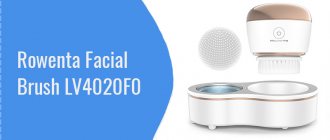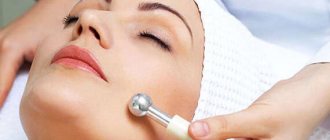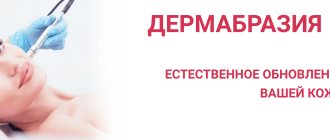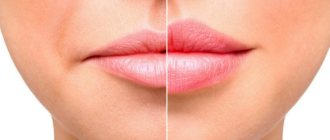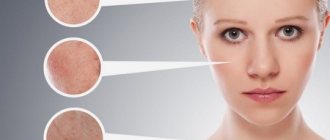Quite a lot of controversy and opposing opinions are caused by “new” procedures, attractive primarily due to their price. One of them is plasma blepharoplasty and, in general, correction with plasma devices (plasma pens, etc.).
We tell the whole truth.
2) Plasma devices are not even a household device that can be used in cosmetology.
There is a loophole in the law that allows the use in medical practice of devices that are household, and not medical. The border between these two categories is very thin; it is generally accepted that everything that does not violate the dermal layer and does not affect the skin and subcutaneous tissues can be classified as household appliances. As an example, various electromechanical simulators are often cited, which are used for all kinds of massages and weight loss in beauty salons.
Household appliances do not need to be registered with Roszdravnadzor, but it is necessary to obtain an expert opinion that the device is a household appliance.
As we understand, plasma-liners damage at least the surface layer of the skin, so they cannot be classified as household products at all! There is no point in further discussion.
Contraindications
Hardware plasma lifting is considered a safe procedure that does not harm the eyes and skin if everything is done by an experienced professional and the rules of rehabilitation are not neglected. However, the use of Plasma Liner has some health restrictions:
- purulent wounds;
- allergic rashes;
- oncology;
- acute inflammation of the skin at the site of the procedure;
- the presence of a pacemaker or other built-in devices, metal implants in the plasma rejuvenation area;
- cardiovascular diseases;
- diseases of the kidneys, liver, endocrine and respiratory systems;
- epilepsy;
- pregnancy, breastfeeding, menstruation - hormonal changes can reduce the effectiveness of the Plasma Liner.
If you have been injected with Botox or fillers, wait until at least 3 weeks have passed and only then sign up for the procedure.
3) Manufacturers do not guarantee anything other than the performance of the device.
Let's start with foreign manufacturers: in the best case, when you purchase, you will receive a piece of paper with a foreign certificate in Korean, Chinese or another language and a seal. The technical characteristics of a medical device must indicate the power, pulse duration, depth of penetration into tissue, and point diameter. There is no such information in any instructions, we translated it. This means the impact is unpredictable.
A number of foreign devices have a certificate of conformity of the Eurasian Economic Union, which was issued by the distributor (individual entrepreneur or LLC) and notifies that the product complies with safety standards for perfumery and cosmetic products. Such a certificate is at least somehow related to cosmetology, but it regulates exclusively technical and component parameters, not medical parameters.
An example of such a declaration:
In a number of cases, outright forgeries have been recorded: GOST 9001-2015, indicated on websites and in accompanying information, does not notify the quality of products, but confirms that the organization is effectively functioning in a management system for the quality of products and services produced in the organization. This document is aimed at improving the company’s image, distinguishing it from competitors, but most importantly, allowing the company to enter the international market.
There is a company in Russia that produces a domestic plasma device - Plasma Pen, maybe everything is fine with its guarantees, and the registration certificate is only a matter of time?
The company claims that all products have all certificates and licenses, but upon closer examination, a funny fact emerges: the needles for the plasma device (consumable material) have a registration certificate from Roszdravnadzor and they are a medical product (!!!), while the device - no!
The device itself is issued with: a certificate of conformity (in which Rostest confirms that the device complies with the Technical Specifications of the manufacturer itself (TU 26.60.11-001-39562978-2017) and a certificate of conformity of the Eurasian Economic Union (which declares the device’s compliance with the standards of “safety of low-voltage equipment” Do you get the idea? - / “children’s flashlight” / “electric shocker” (or any other low-voltage device) and declares that it is made according to its own specifications. Where is the medicine here? - well, of course: needles! Certified as medical products. That The plasma itself is collected at the tip of the needle!
Why doesn’t it occur to anyone to use a wood burning device for cosmetic purposes? (Oh... that was a bad idea...)
If you stick a medical needle into a burning device, will it become suitable for cosmetology?
Whether these documents are enough for MEDICAL is up to you to decide for yourself.
Types of plasma equipment
Here we will highlight the types of cosmetic plasma devices according to the method of plasma formation.
Plasma is formed inside the nozzle (plasma jet)
The world’s first plasma device, Portrait® PSR, worked on this principle, which was first used in 2006 for the purpose of skin rejuvenation. Nitrogen was used as the plasma-forming gas. In the handle of the device, under the influence of an ultra-high-frequency electric current, nitrogen molecules were ionized, and at the output a beam of plasma penetrated the skin through millisecond pulses. Why was this particular gas used? Due to its inertness (nitrogen displaces oxygen from the surface of the skin, necessary for oxidation and combustion, thus preventing the risk of burns and scarring). Today, some of the devices available on the market operate on exactly the same principle: ready-made plasma in the form of a beam of a certain diameter acts on the skin.
In addition to nitrogen, other inert gases, such as argon, are also used. This method is considered non-contact, since the parts of the device do not interact directly with the skin. Such equipment allows today to carry out procedures for plasma skin resurfacing, wound treatment, and vascular coagulation. The epidermis layer is damaged during the procedure and gradually exfoliates (neoepithelialization occurs in 5–7 days), serving as protection for the lower layers of the skin until it is renewed. This reduces the risk of side effects (scars, depigmentation, infections). The dermal layer requires longer renewal, as its damaged structures are slowly destroyed and replaced with new collagen and elastin. Remodeling of the dermis lasts 3–4 months.
Larisa Arkadyevna Astrakhantseva, educational cosmetologist:
“Modern devices operating according to the described principle: “impact by a plasma jet” have the ability to operate with a beam of different diameters in both high- and low-energy modes. Depending on the program and the nozzle used, the operator can adjust the plasma flow density.”
Plasma is formed between the electrode and the skin surface (dielectric barrier discharge)
This method does not require the use of special gas in the equipment; here the role of ionized neutral gas is played by ordinary air (a mixture of atmospheric gases), which forms a natural layer between the surface of the skin and the nozzle. There is an electrode at the tip of the nozzle. When the doctor gives a pulse, a plasma arc is formed between the electrode and the skin, which penetrates the skin and forms a crater in it, evaporating the microzone without heating the surrounding tissue. This method is also non-contact (the doctor works at a distance of 0.5–1 mm from the skin). To carry out the procedure, disposable (or individual, used several times) needle tips are used.
This method of plasma formation can be used in different designs of plasma equipment and use different types of plasma, depending on the purpose of its use.
For example, a single electrode tip, called a surgical tip, uses high-energy plasma to sublimate tissue. It is used for procedures such as: blepharoplasty, correction of bags under the eyes, deep wrinkles, scars, stretch marks, pigmentation, skin lifting, acne treatment, removal of tattoos and tumors.
The “plasma shower” or “plasma jets” nozzle has many electrodes (for example, 20–25). This is a larger diameter nozzle for working with larger areas of skin. This attachment works with low-energy plasma and is intended for antibacterial treatment of the skin (for example, in the treatment of acne), improving its general properties (reducing hypersensitivity, stimulating the production of collagen and elastin), with its help activating the system of transdermal delivery of drugs and cosmetics to the skin
You can use this procedure as an independent procedure, or you can make it part of the protocol and use it to enhance the penetration of hyaluronic acid, peptides, vitamins, etc. into the skin.
Sometimes both attachments can be found in one plasma machine.
(It is known that there is also equipment in which the nozzle has many electrodes and which operates on high-energy plasma on the principle of sublimation, that is, it can treat a larger area at once (for example, carry out lifting by reducing a skin flap in the abdominal area). At the moment, Such equipment is not available on the Russian market.)
Plasma is formed in the air near an electrode with a curved surface (“corona discharge”)
In this device, plasma is also formed not in the handle of the device, but in the air, which here acts as a neutral gas, near an electrode with a strongly curved surface. Depending on the number of electrodes in the nozzle (there can be one or many), this method can be used as a “plasma knife” (for example, to remove tumors) or as fractional photothermolysis (for lifting procedures). This method of obtaining plasma is also used for bactericidal purposes.
Among other options for using plasma for skin rejuvenation, fractional microplasma RF technology is known. The tips of the manipulator of such a device are studded with many needle-shaped electrodes (spicules), and at the moment of approaching the surface of the skin (at a distance of several micrometers), a powerful electrical radio frequency discharge passes through the electrodes, which generates plasma flashes (many high-density microplasma discharges). This method is recommended for correcting age-related changes (wrinkles, sagging skin), scars, and even out skin tone. You can use it to work on the body in areas with a large area of skin, for example in the abdomen.
4) “Cosmetologists” working with “plasma pens” are charlatans!
The statement is loud; Let’s explain the essence: almost all plasma devices DO NOT REQUIRE medical education from the “operator” - this is what manufacturers and sellers say.
Moreover, it is often stated in plain text that no knowledge in the field of beauty is required at all.
Does the patient have confidence that the “doctor” he came to took the Hippocratic oath and really won’t harm? There is no level of trust in such procedures and techniques. Is a professional doctor ready to place himself among such self-trained “colleagues”?
Doctors who have received a medical education, but who have chosen plasma corrections, frankly want to save money.
Sellers of plasma pens position them as an innovative development, and the device is equated in efficiency to a CO₂ laser, while the “pen” costs from 15,000 to 150,000 rubles. For comparison, prices for CO₂ lasers start at 2 million rubles. It is the price that sellers focus on. Saving? Even some!
Training on CO2 lasers costs from 50,000 rubles and takes a lot of time. Training on plasma pens takes place over 1-2 days and is supported by a “certificate”. Cool? - Certainly!
Why spend money on expensive, time-tested equipment? Why invest in your education when there is a similar technology that, it would seem, also cauterizes the skin and leads (as they promise) to a lifting effect?
Let's call such cosmetologists poor (or thrifty) and unsure of themselves. Confident specialists invest in their qualifications and confirm them with results. If a cosmetologist does not know how to work with lasers, then he needs to learn how to do this, and not buy incomprehensible cheap equipment.
Cosmetology Procedures involving plasma
Procedures using high-energy plasma:
- removal of excess volumes of skin (a particularly popular procedure today is blepharoplasty of the upper and lower eyelids: using plasma sublimation, excess skin area is “excised”, forming drooping eyelids and the formation of wrinkles due to excess skin tissue in this area; plasmolifting is carried out not only in blepharoplasty procedures, but and to eliminate excess skin volume on other areas of the face and body that require a “lift”, but it gives its maximum effect on the skin around the eyes);
- coagulation of vascular formations;
- correction of hyperpigmentation;
- removal of scars, scars, stretch marks;
- removal of warts and other benign formations;
- treatment of active acne and correction of post-acne;
- removal of tattoos, permanent makeup.
Procedures using low-energy plasma:
- skin disinfection and wound treatment;
- acceleration of tissue regeneration;
- increasing skin turgor and improving general properties;
- increasing skin permeability to active components; medicinal and cosmetic products.
6) The results of the procedures performed are not obvious and hidden. Complications do occur.
The vast majority of before/after photographs show the patient “before” and “during” or “immediately after.” Where are the photographs of the result after the “convergence” of all the consequences of the procedure?
Moreover, there is a fairly large percentage of forgery and deception! Photos of the result after operations and after CO2 laser exposure are passed off as the results of plasma procedures.
Reported complications:
- Pigmentation
- Perforation of fabrics
- Micro scars
- Edema
- Long-term rehabilitation
These complications are nothing new for those who work with laser equipment, but the extent to which they can be corrected after exposure to plasma is unknown.
Advantages and disadvantages
Advantages of plasma liner rejuvenation:
- safety;
- efficiency;
- noticeable effect after the first procedure;
- lasting results;
- painless use of the plasma liner;
- wide range of uses;
- prolonged effect.
The disadvantages include:
- an impressive list of contraindications;
- risk of complications;
- the high cost of using a plasma liner, especially if you need to perform several procedures;
- special care that a person needs after lifting.
7) Plasma is an alternative to CO2 laser. But why?
Well, and most importantly: there is ablative laser cosmetology that has been proven for decades - resurfacing and peeling on proven devices, with well-known protocols and results.
A procedure with an experienced cosmetologist who gets good results with CO2 lasers is more expensive than a dubious burning with strange devices. Although we found a couple of “masters” performing the plasma blepharoplasty procedure for 20,000+ rubles. In our clinic, this procedure on a professional laser device costs 15,000 rubles.
PS. Perhaps this method of influence is working; foreign colleagues have illustrated examples of the procedures performed, where (judging by the photo) a good result is shown.
Pay attention to the density of points in the work of foreign colleagues.
However, in our realities, we do not advise either specialists to use this discredited method, or patients to run under the magic plasma, the consequences of which are unclear, and the specialists performing the procedure may turn out to be crooks.
Can I do it at home?
The device should only be used by a person with specialized education who knows the anatomy of the face and the features of the plasma rejuvenation technique.
For this reason, companies that sell plasma liners offer preliminary training in how to operate the device. Some distributors do not even sell devices to customers who have not completed a special course.
If you invite a qualified cosmetologist who performs procedures at home, he will be able to carry out the necessary manipulations. But remember: mistakes during plasma lifting are fraught with health problems. Therefore, take the time to go to the clinic, where an experienced professional will supervise all stages of the process.
There are relatively inexpensive devices for home use - for example, the Beauco Plasma Pen (costing about 10 thousand rubles). However, their use, as in the case of a plasma liner, also requires special knowledge.
And now the whole truth about plasma lifting
Again, everything written above is an advertising ploy that attracts the attention of women who want to preserve their youth. Now I want to talk about those reviews, more or less truthful, that I was able to find on professional and lay forums dedicated to the effectiveness of plasma lifting
First, it’s worth dispelling the myth that plasma lifting is a super innovation. In medicine, something similar is called autohemotherapy, developed at the beginning of the last century! The purpose of the technique is to boost the body's defenses to fight infection, acne, chronic diseases, etc.
Autohemotherapy was used as an auxiliary treatment with excellent positive results: activation of healing processes after wounds, operations, rapid restoration of the skin after purulent-inflammatory processes, rapid recovery after severe or sluggish diseases.
Now about the reviews themselves. Yes, plasma lifting will help get rid of acne, as will blood transfusion, which has been used for this purpose for more than 50 years. The introduction of plasma gives an impetus to the renewal of skin cells, which will make it healthier and improve color.
Regarding wrinkles: the maximum effect is impossible and do not believe those who say otherwise. Perhaps small wrinkles will go away, but that’s not a fact!
As for lifting, that is, tightening the facial skin, definitely not! There may be some positive changes in the eye area and forehead due to the resulting volume. And the nasolabial lips, jowls, and cheeks can drop even lower due to the same volume of fluid.
How the plasma lifting procedure goes, watch the video:
Source https://woman-cosmetolog.com/beauty-injections/plazmolifting-contraindications.html
How does non-surgical blepharoplasty happen using the plasma pen device?
First you need to prepare the skin: clean it of makeup, dirt and treat it with an antiseptic. Then an anesthetic cream such as Emla or a Korean anesthetic with a high content of lidocoine is applied for 20 minutes (depending on the patient’s pain threshold).
By the way, the procedure is easily tolerated. Judging by the reviews, only warmth is felt, and not burning pain.
Non-surgical eyelid lifting occurs in a gentle manner. The plasma beam acts for a fraction of a second. Removing warts will require a slightly longer treatment, but it is also painless.
In total, you need from 10 to 30 minutes per session, not counting the time for anesthesia.
After the plasma foam machine, tiny dots remain. They will then become crusty. When they disappear, a slight redness will remain. The effect will be noticeable after just one procedure, but the client will see the final result within a few weeks.
Buy Plasma Beauty Monster: design, models, characteristics
The device has a plastic case with a small display. It displays the selected operating power. There are also buttons for start, control and plasma generation. There are only four buttons.
The weight of the “handle” is 50 g. It is easy to hold and the brush does not get tired. You can insert one of three attachments into the device.
The Plasma Beauty Monster Professional System comes with a power adapter.
You can buy a plasma pen device from Beauty Monster in white and black versions.
Beauty Monsters are made in Korea. Passed certification in Europe, USA and Russia. The device is approved for use in our country to improve skin condition.
Multi-plasma current device Mediselor BeautyMonster WHITE
This is the first model of Beauty Monster. It has 8 power levels and 8 frequency levels. Thanks to this, you can get 36 working combinations for precise work on different areas of the skin and different problems. Device power – 10 W.
Multi-plasma current device Beauty Monster BLACK
This device is an improved version of the white model. It has a more simplified operating principle. It has 4 power levels and 4 frequency levels, which together gives 16 combinations.
Thanks to fine adjustments, there is no risk of perforation and tissue pigmentation. Power is also 10 W.
The Plasma Pen Beauty Monster device from Korea uses safe surgical steel sus316. Creates a stable quasi-neutral charge so ablation points do not have burnt edges. As a result, the patient does not have any scars or burns.
Attachments for Beauty Monsters
You can buy a Plasma Pen Beauty Monster in Moscow with a set of attachments. There are three of them: plasma, fractional, thermal. Each of them has its own functions.
| Photo | Name | Functions |
| Plasma | ||
| Factional | ||
| Thermal |
The attachments are made of surgical steel. They do not contain harmful impurities, so they can be used in cosmetology.
Many similar devices have only one operating mode and one attachment. Beauty Monster Black and White with three attachments and 16 modes allow you to finely work with different skin types and conditions.
See how Beauty Monster differs from other plasma pen devices.
Side effects
The method itself has no side effects, but it is important to understand that rejuvenation with cold plasma can only be performed by a certified specialist using a high-quality device that has passed all the necessary tests.
If you end up with an incompetent specialist, you can expect bruises, burns, bumps on the skin, pigmentation, and allergic reactions as side effects.
Trust the care of your skin only to experienced, qualified specialists!
Plasma facial rejuvenation – reviews with before and after photos
Reviews about the plasma facial rejuvenation procedure are mostly positive. Negative customer reviews are usually associated with the peculiarities of the skin (for example, very thin and dry skin), the expectation of an instant lifting effect after one procedure.
“I had the plasmaliner treatment done 2 weeks after the mechanical peeling. I liked the effect, despite the fact that redness, swelling, and severe flaking of the skin persisted for about 3 days. “I repeated the procedure and now I’m happy with my face: the crow’s feet near the eyes smoothed out, pigmentation went away, and my face began to look rested.” Irina Petrova, 34 years old.
“I can’t say that I’m directly delighted with the procedure, because I love instant results. After the plasma, temporary isolation was required, as there were unpleasant light brown marks on the face from the effects of the device. But after 5 days, the skin really evened out its tone, became younger, and refreshed. I’ll try again in a month, maybe the same effect will appear.” Yaroslava Isarov, 31 years old.
“I’ve done everything I can to my face, but I avoid beauty injections and any radical intervention. The cosmetologist advised me to try treating the skin with a plasmaliner. I completed one session and am satisfied. The only negative is redness and flaking for almost a week. I had to stay at home until it healed completely.” Olga Yashina, 36 years old.
Let's sum it up
With the help of plasma lifting you can achieve the following results:
- Rejuvenation. Dead particles are removed and new ones are formed, due to which the skin is smoothed, its elasticity increases, it becomes softer and softer. Plasma components activate genes responsible for cell rejuvenation.
- Protection. Minimizes the harmful effects of ultraviolet rays, increases the regenerative qualities of the epidermis, helps the rapid healing of small scars and wounds. The skin is less affected by external factors such as sun rays, temperature changes or taking potent medications. The proliferation of pathogenic microflora is suppressed.
- Hydration. Deeply moisturizes the layers of the epidermis, improves the reproduction of macromolecular proteins responsible for the elasticity of the skin. The skin retains more moisture inside, causing the feeling of dryness and tightness to go away. Inflammation and irritation are also eliminated.
- Pigmentation decreases. Increased metabolism entails constant renewal of cells on which pigmentation does not have time to appear. This allows you to even out your complexion.
- Increased trophism. Skin microcirculation increases and metabolic processes accelerate. Healthy skin takes on a fresh look.
Plasmolifting helps tighten the skin of the face and make its contours clearer. Therapy will be very useful for patients with problem skin, especially if they have acne. However, you should not hope that all problems will be solved at once. You can, for example, smooth out small wrinkles, and alternative procedures can help eliminate large folds of the skin.
Recovery period
It takes a very short period of time to recover. Literally the next morning after the manipulations, you can return to your usual lifestyle.
The chipped areas of the face will require gentle care for about 2 days. During this time, the following actions are not allowed:
- touch the skin;
- do make-up;
- wash your face using harsh products containing SLS;
- go to a public swimming pool, baths and saunas;
- use drugs that affect blood clotting;
- take alcoholic beverages and nicotine;
- get a tan in any way: artificial or natural;
- exercise.
You need to temporarily give up some things.
During the procedure, the needle can slightly damage the skin, as a result, small swelling and redness are formed, reminiscent of papules. In this case, you can carry out the following manipulations.
- Use special foams and gels with a mild effect for washing.
- Use regular cosmetics to saturate the skin with moisture and vitamins.
- At this time, you should not experiment with new cosmetics. For thorough facial care, you need to use an antiseptic with a bactericidal effect recommended by a cosmetologist.
After plasma lifting, it is very important to maintain water balance. You need to drink more water after plasma lifting
You need to drink more water after plasma lifting



